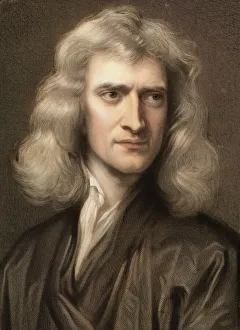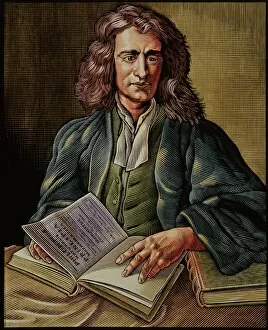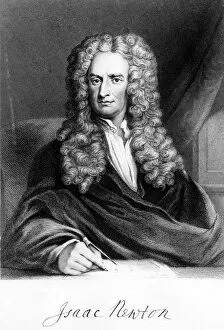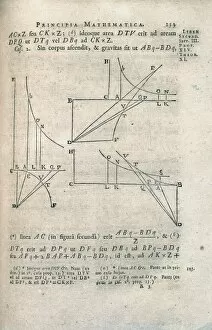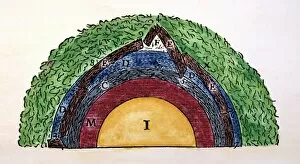Principia Collection
"Exploring the Genius of Principia: Unveiling the Mind of Sir Isaac Newton" Step back in time to 1689 as we catch a glimpse of a young Sir Isaac Newton
All Professionally Made to Order for Quick Shipping
"Exploring the Genius of Principia: Unveiling the Mind of Sir Isaac Newton" Step back in time to 1689 as we catch a glimpse of a young Sir Isaac Newton, the brilliant English mathematician who forever changed our understanding of the universe. His portrait captures his youthful determination and insatiable curiosity. Isaac Newton's name is synonymous with groundbreaking discoveries, particularly his revolutionary theory on gravity. A vibrant lithograph showcases him deep in thought, contemplating this fundamental force that governs our world. Intricate chromolithographs depict Newton himself, immortalizing his contributions to science and mathematics. These illustrations serve as a testament to his enduring legacy. The axioms or laws of motion presented in Volume I of The Mathematical Principles of Natural Philosophy are showcased here, revealing Newton's systematic approach to unraveling the mysteries of nature. This monumental work laid the foundation for modern physics and remains an essential reference even today. As we turn each page, we encounter captivating images from Rene Descartes' Principia Philosophiae – another influential text that shaped scientific thinking during its time. Its title page exudes elegance and intellectual depth while inviting readers into Descartes' philosophical world. Beyond academia, insurance companies memorialize Newton's brilliance by incorporating his image into their emblems – a nod to his profound impact on various fields beyond pure science. Journeying through history brings us face-to-face with Roman forts along Hadrian's Wall in England – remnants from an era when principles were defended fiercely. Similarly, Isaac Newton's ideas challenged existing paradigms and reshaped our understanding of reality itself. Finally, an exquisite engraving by Samuel Freeman transports us further into the 18th century where we witness Newton's likeness captured for posterity. It serves as a reminder that great minds transcend time and continue to inspire generations long after they have departed this earth. Principia unveils not only Sir Isaac Newton’s genius but also the profound impact he had on our world.

